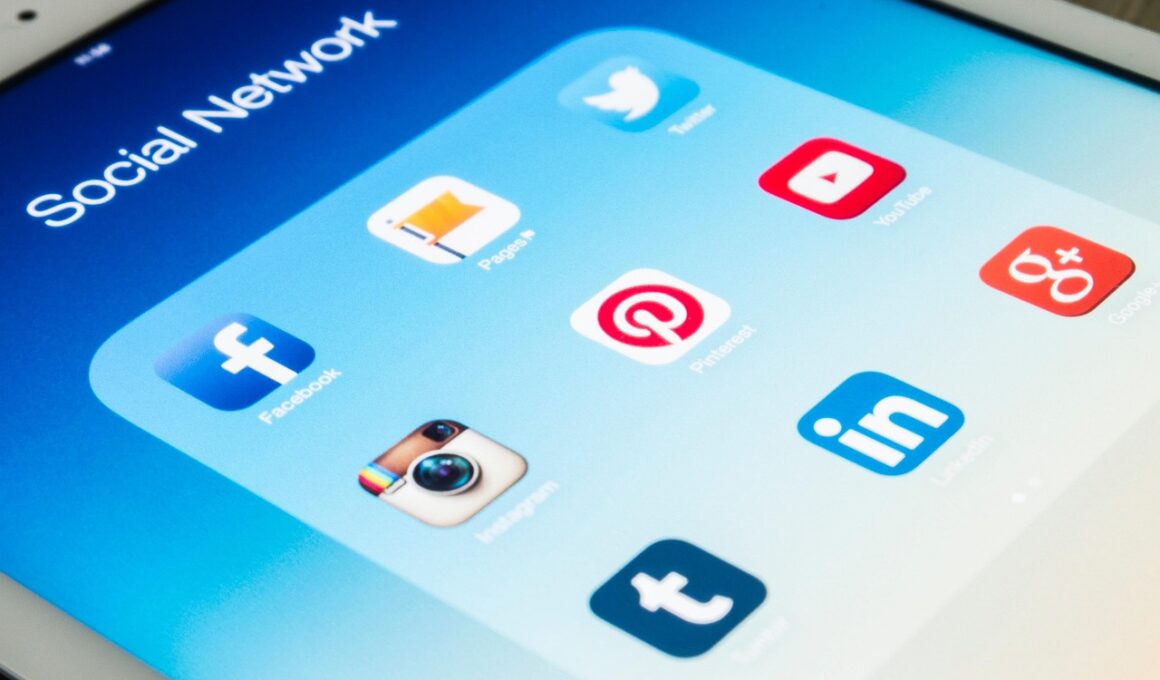Creating Mobile-Friendly Twitter Contests
Creating engaging Twitter contests requires thoughtful planning and creativity to capture your audience’s attention effectively. One of the most critical elements in running these contests is ensuring they are mobile-friendly, as a significant portion of Twitter users access the platform via their smartphones. A mobile-friendly design enhances user experience and encourages participation. Begin your planning by outlining your goals, such as increasing followers, boosting engagement, or promoting a product. Make sure that all contest-related content can be easily viewed and interacted with on mobile devices. Include concise, engaging visuals like images or GIFs showcasing prizes or contest rules to draw users in. Consider leveraging simple and direct instructions that can easily be followed through a mobile interface, with hashtags that resonate with your target audience. Keep in mind that your contest should also be shareable, so include buttons or links that facilitate sharing among followers. Overall, a seamless mobile-friendly experience will not only increase participation but also foster a positive perception of your brand among users.
Next, utilize eye-catching graphics or videos that are optimized for mobile viewing to attract participants. The time spent on creating attractive visuals could lead to higher interactions, thus improving the success of your Twitter contest. Additionally, consider the timing of your posts. Research suggests that the optimal post times can significantly impact engagement levels on Twitter. Identify when your audience is most active, and schedule your contest announcements accordingly. Engaging tweets should have clear calls to action, compelling users to participate actively. Mentioning specific time frames for contest entries fosters a sense of urgency among followers, prompting them to enter quickly. Including participation criteria in concise bullet points can help clarify expectations, driving engagement levels up. Lastly, to ensure a higher number of entries, consider offering multiple chances to win. Structuring your contest to allow for greater engagement increases excitement around it, leading to a more vibrant Twitter conversation. Overall, these strategies can help your Twitter contest achieve remarkable results and enhance your brand’s visibility.
Effective Hashtag Strategies
One of the most powerful approaches to organizing Twitter contests is through the effective use of hashtags. A strategic hashtag can easily categorize entries and inquiries, simplifying participant engagement. Select a unique hashtag for your contest that is memorable and relevant to the theme or purpose of the event. Encouraging users to include this hashtag in their entries boosts visibility and facilitates easier tracking of participation. Additionally, consider integrating trending or popular hashtags relevant to your audience when promoting your contest to broaden its reach. This practice can draw in users who might not typically follow your Twitter account, expanding your brand’s influence. Make sure to provide participants with guidelines on how to use the hashtags effectively to ensure consistency. Crafting engaging content and preview posts that highlight the hashtag can also serve to pique interest about your contest and encourage users to participate. Be consistent with your messaging throughout the contest duration, reminding users about the importance of the hashtag and how it relates to their participation. This strategy helps maintain engagement and encourages organic participation.
Another effective strategy to enhance engagement in Twitter contests is to collaborate with influencers relevant to your industry. Influencers have established followings and can help promote your contest to a broader audience, driving additional participation. Identify influencers who resonate with your target market and align with your brand values. Reach out to engage them in co-hosting or sponsoring your contest, providing incentives for their followers to join in. When influencers share contest details on their profiles, it generates excitement and credibility, encouraging their audience to participate. Provide clear instructions and content ideas that influencers can use to promote the contest well. You might also incentivize the influencer’s participation with additional perks, such as free products or exclusive experiences. This dual approach not only increases entries but also builds relationships between your brand and influential figures within your niche. Leveraging influencers strategically maximizes the reach of your contest and attracts individuals who have strong potential to engage with your brand, ultimately benefiting your overall social media presence.
Encouraging User-Generated Content
Encouraging user-generated content (UGC) during Twitter contests fosters community involvement and strengthens brand loyalty among participants. UGC can manifest as photos, stories, or testimonials related to your brand, creating authentic moments of engagement. Encourage participants to share their personal experiences with your products or services while using the designated contest hashtag. This strategy not only invites participants to engage more actively but also generates content that showcases real customer satisfaction. In addition, UGC is a goldmine for community-building, as it positions participants as integral parts of your brand’s narrative. It is essential to highlight and showcase the best entries to recognize contributions and inspire further participation. Consider featuring top submissions on your brand’s official page or social media accounts, providing public acknowledgment and appreciation of community members’ efforts. Using UGC also enhances brand authenticity and relatability, attracting new audiences drawn in by the genuine experiences shared by existing customers. Use follow-up posts to reflect on the success of UGC submissions and how they benefit your brand’s image, creating a continuous cycle of engagement and loyalty.
Moreover, you should ensure all contest rules and regulations are easily accessible to participants to maintain transparency and trust. A clearly defined set of guidelines encourages positive interactions and assists in setting realistic expectations. Provide a dedicated link or resource with comprehensive information about how to enter, eligibility requirements, deadlines, and any legal disclaimers that may be necessary. Post this information prominently on your Twitter feed and in the contest tweet itself, ensuring participants can easily find it. Transparent communication goes a long way in fostering a positive relationship with your audience. Furthermore, utilize polls or interactive questions in your tweets to maintain an active presence, encouraging followers to engage more deeply with your content. This tactic not only keeps the contest in their minds but also prompts audience members to anticipate the winning announcement. Low barriers to entry will encourage a broader audience to participate, which ultimately enhances engagement levels. Consistently engaging your audience through thoughtful interactions ensures your brand remains vibrant and approachable throughout the contest.
Post-Contest Engagement Strategies
After your Twitter contest concludes, it is crucial to follow up with participants and continue engagement efforts. Announcing winners in a celebratory manner can create a sense of accomplishment and increase your brand’s positive perception. Consider tagging winners in posts to recognize their participation and encourage them to share their victories on their profiles. After the contest, it’s also beneficial to share highlights and review the contest’s success, providing feedback on the overall experience. Engage with participants through personalized messages to thank them for joining and encourage them to stay connected for future events. Furthermore, keep the momentum by sharing more relevant content or upcoming events that might interest your audience. This follow-up communication ensures that participants feel valued, nurturing long-term relationships. Implementing feedback tools can also provide insight into participants’ experiences and preferences, allowing you to refine future contests for better results. Establishing a feedback loop can enhance the quality of interaction with your audience, ensuring they remain engaged with your brand even after the contest has ended.
Finally, analytics should play a crucial role in assessing the impact of your Twitter contests. Analyzing engagement metrics such as retweets, likes, and replies enables you to measure the success of your campaign effectively. Utilize Twitter analytics tools to track the reach and engagement of contest-related posts, gaining insights into audience behavior and preferences. Understanding which aspects resonated most with participants can inform your strategies moving forward. Allocate time to review these analytics for future improvements, using the insights gathered for crafting better contests in the future. Keep in mind who interacted with your content throughout the event, noting patterns in your followers’ engagement. This practice helps refine your target audience and tailor future promotions. Additionally, collate participant feedback to gain an even deeper understanding of their experience and expectations. When used effectively, data-driven decisions can significantly bolster your Twitter presence and community engagement. Ultimately, a well-structured approach to analytics will lead to more successful contests and a stronger online community aligned with your brand’s objectives.


